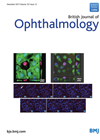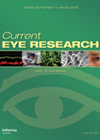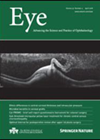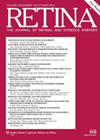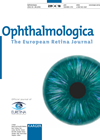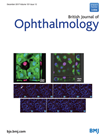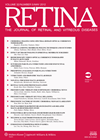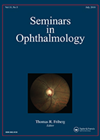
Journal Reviews
Radiation maculopathy
This is a retrospective non-randomised study of 13 consecutive eyes of 13 patients affected by radiation maculopathy secondary to eye irradiation for primary uveal melanoma (Iodine-125 brachytherapy). All patients were treated with a single intravitreal 0.7mg dexamethasone implant and full...
Macular pigment and dark adaptation in older population with normal maculas
Macular pigment (MP) such as lutein, zeaxanthin and meso-zeaxanthin are highly concentrated in the fovea. They protect the retina from damage of ambient blue light via antioxidant properties. In older eyes with normal healthy retina, macular pigment optical density (MPOD)...
Effects of blood donation on the physiology of the eye
Hypovolaemia is a state of decreased blood volume, the reduction of which reduces tissue perfusion which may in turn lead to cellular hypoxia and end-organ damage. In blood donation, 500ml of blood is collected in ten minutes. This equates to...
Ranibizumab safety in pregnancy
Vascular endothelial growth factor (VEGF) plays a pivotal role during pregnancy, and systemic anti-VEGF administration during this period should thus be avoided. VEGF is expressed in multiple embryonic and foetal tissues during development, with the highest levels found in the...
OCTA and pigment epithelium detachments
Yannuzzi et al. report on their study aiming to evaluate the ability of optical coherence tomography angiography (OCTA) to differentiate vascularised from nonvascularised pigment epithelium detachments (PEDs) using conventional imaging techniques, including fundus fluorescein angiography (FFA) and indocyanine green (ICG),...
2018 update on intravitreal injections
In this review article the authors have highlighted the standardised and structured approach to intravitreal injections (IVI) by examining the recent evidence-based literature. IVI is the most commonly performed procedure worldwide with low potential risk of endophthalmitis. IOP spikes are...
Incidence and risk factors of ocular hypertension following PPV and SOI
In this prospective, interventional study the authors evaluated the risk factors for elevated intraocular pressure (IOP) after pars plana vitrectomy (PPV) with silicone oil injection (SOI). This study included 254 eyes of 254 patients, with a mean age of 55.33...
Reduction of severe visual loss and complications following IAC for RB
This was a retrospective cohort study of patients with retinoblastoma (RB) who required intra-arterial chemotherapy (IAC) between 2013 and 2015, who had relapsed following systemic chemotherapy. A total of nine patients were included in the study and their ocular complications...
PRN Ranibizumab verses continuous aflibercept in UK clinical practice
This was a multicentre (21 UK hospitals), national EMR study on treatment naïve nAMD eyes, undergoing predominantly as needed (PRN) Ranibizumab or continuous (fixed or treat and extend - (F/TE)) Aflibercept (Af). The primary outcome was change in vision at...
Correlation between anti-retinal antibodies and proliferative vitreoretinopathy (PVR)
The pathological basis of PVR is not clearly understood and there are no effective medications targeting this condition. This cross-sectional study looked at the possible association of anti-retinal antibodies with patients with PVR and retinal detachment (RD). Aqueous and vitreous...
Macular atrophy with aflibercept
The authors of this paper set out to investigate the prevalence of macular atrophy in treatment-naive patients with neovascular AMD undergoing aflibercept monotherapy (three monthly loading injections followed by subsequent treatment every two months). Case notes over a three year...
Meta-analysis of HLA B27 associated acute anterior uveitis
A literature-based meta-analysis was carried out to look at the various clinical features associated with HLA- B27 acute anterior uveitis (AAU). After an extensive search of literature for HLA B27 uveitis was conducted, 735 results were obtained. Twenty-nine articles were...

